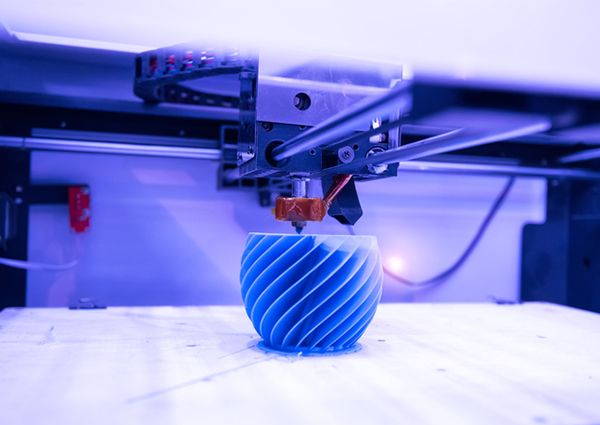Editor’s Note: Mark Dohnalek is President & CEO of Pivot International, the Kansas-based global product development, engineering & manufacturing firm.
Over the last 5 years, 3-D printing, also known as additive manufacturing, has had a tremendous influence in our industry. It is considered the current and future of almost any conceivable form of fabrication. Though this technology has been embraced by enthusiasts from small-time makers to international aerospace ventures, questions about its cost effectiveness are paramount to widespread adoption. Here's why.
Costs of production for additive manufacturing fall into two categories: “well-structured” costs, such as labor, material, and machine costs, and “ill-structured” costs, which can include machine setup, inventory, and build failure. Right now, most cost studies focus on well-structured costs, which comprise a significant portion of 3-D printing production and are cited by detractors as evidence of cost ineffectiveness. Unfortunately, these studies focus on the production of single parts and tend to overlook supply chain effects, thus failing to account for the significant cost benefits which are often concealed within inventory and supply chain considerations.
In the auto industry, for example, inventory and waiting comprise 92% of the assembly time, and this is independent of the production of the many other components and parts of the finished product and which have inventories and waiting periods of their own. Further, these parts must be transported between locations. The average distance that such parts and equipment are shipped is 801 miles, equaling 45.3 billion ton-miles in annual transport, constituting 100's of billions in manufacturing inventory that could be allocated elsewhere if the need for inventory could be reduced.
By using 3-D printing, this process has the possibility of creating an entire assembly in a single build, and in some cases can dramatically reduce certain transportation and inventory expenses with effects that ripple throughout the supply chain. In other words, to understand the cost differential between 3-D printing and traditional manufacturing, an end-to-end assessment of raw material extraction costs to production and through final sale must be undertaken.
A simplified form of this evaluation requires a review of only four variables: setup cost, materials cost, lead time cost, and manufacturing time cost, the latter two illuminating the tradeoffs between cost and speed. For example, traditionally manufactured injection molds can take as long as 6 weeks to complete, but once finished can produce a part every minute. In contrast, 3-D printing has a much shorter lead time (the time it takes to design a print file) but produces each part at a much slower rate.
Aside from the question of 3-D printing's cost effectiveness in relation to end-to-end production, the evolution of printing materials and processes is making this form of fabrication increasingly affordable. The reason for this lies in the fact that it mirrors historical trends in all aspects of technology. Leading edge tech innovation has always appeared in the marketplace as high-end novelty items unaffordable to the average consumer (like digital audio players), gradually being produced by multiple manufacturers and becoming widely affordable and practically ubiquitous.
Current trends in 3-D printing suggest that the lines between “low cost” printers ($5,000 and under) and industrial printers are beginning to blur with more affordable machines delivering the process repeatability of what have previously been more expensive industrial-level models. While many of these models cannot compete with their industrial counterparts, they are more than adequate for creating low- to mid-level prototypes for small- and medium-sized companies.
In the meantime, the expenses associated with other additive printing technologies like selective laser sintering and binder jetting, are slowly beginning to decrease. If historical trends are any indication, it is not inconceivable in the next twenty years that individuals and small startups may be able to afford and avail themselves of some of the more spectacular printing capacities of what are currently limited to million-dollar industrial models.
SC
MR


Latest Supply Chain News
Latest Podcast

 Explore
Explore
Software & Technology News
- Nine questions are the key to AI success in building resilient supply chains
- Looking back at NextGen 2024
- AI is moving omnichannel closer to the customer
- How technological innovation is paving the way for a carbon-free future in logistics and supply chains
- Körber Supply Chain Software’s Craig Moore says MercuryGate acquisition is about the customer
- Robotic use grows by 10%
- More Software & Technology
Latest Software & Technology Resources

Subscribe

Supply Chain Management Review delivers the best industry content.

Editors’ Picks




